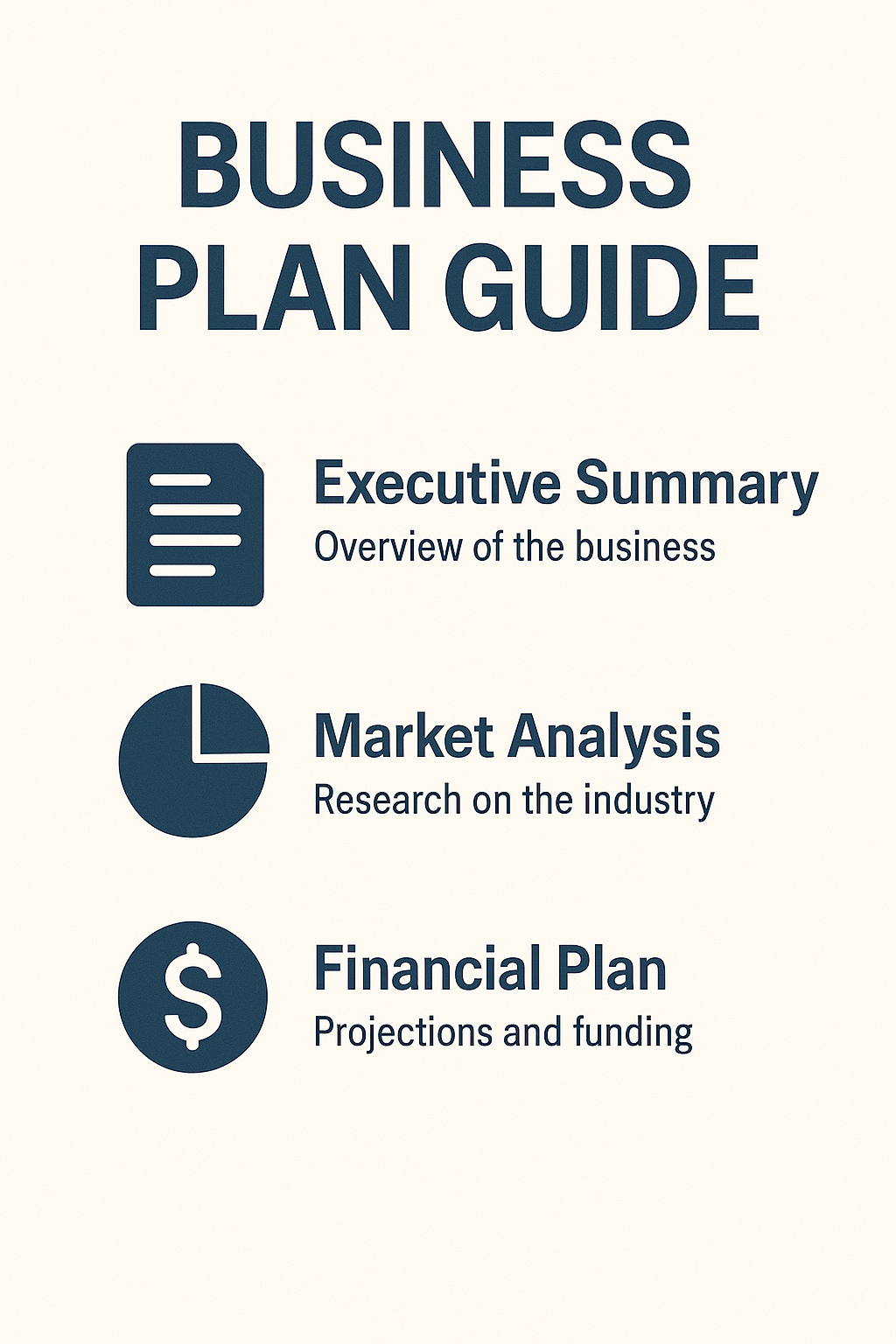Starting a business is an exciting journey, but having a solid foundation is crucial to success. For aspiring Australian entrepreneurs and small business owners, a well-structured business plan is not just a document; it’s a roadmap to guide your startup through its initial stages and beyond.
This blog post will introduce you to your ultimate business plan template PDF, tailored specifically for the nuances of business planning in Australia.
Whether you’re developing a startup plan in Australia or refining an existing strategy, this guide is designed to empower you with essential tools and insights.
Join us as we explore how to create a business plan that will set you on the path to achieving your entrepreneurial dreams.
NOTE: You can get your free ultimate business plan template PDF guide below.
Understanding the Australian Business Plan
Creating a business plan tailored to the Australian market is crucial for entrepreneurs looking to establish or grow their ventures. Let’s explore the key components and benefits of a well-crafted Australian business plan.
Key Elements of a Business Plan
A comprehensive Australian business plan typically includes several essential components. These elements work together to provide a clear roadmap for your business’s future.
The executive summary is the first and most critical section, offering a concise overview of your entire plan. It should capture the reader’s attention and highlight your business’s unique value proposition.
Your company description follows, detailing your business structure, mission, and vision. This section should also outline your products or services and explain how they meet market needs.
Market analysis and strategy are crucial elements that demonstrate your understanding of the Australian business landscape. Here, you’ll present your research on target customers, competitors, and industry trends.
Finally, your financial projections and funding requirements round out the plan, showing potential investors or lenders the viability of your business model.

Importance of a Business Plan Template
Using a business plan template can significantly streamline the process of creating your startup plan in Australia. Templates offer numerous advantages for entrepreneurs at all stages of their journey.
Firstly, a well-designed template ensures you don’t overlook any critical sections of your business plan. It provides a structured framework that guides you through each component systematically.
Templates also save time and effort, allowing you to focus on the content rather than the format. This is especially beneficial for busy entrepreneurs who need to quickly produce a professional-looking document.
Moreover, using a template can help standardize your plan, making it easier for potential investors or partners to review and compare with other proposals they receive.
Benefits of Business Planning in Australia
Engaging in thorough business planning offers numerous advantages for Australian entrepreneurs. It’s a process that can significantly impact your venture’s success and longevity.
One key benefit is the clarity it provides. By outlining your goals, strategies, and financial projections, you gain a clearer understanding of your business’s potential and challenges. This insight allows you to make more informed decisions and allocate resources effectively.
Business planning also forces you to research your market thoroughly. This process can uncover valuable insights about your target audience, competitors, and industry trends specific to the Australian market.
Furthermore, a well-prepared business plan can be a powerful tool for securing funding. Many Australian lenders and investors require a comprehensive business plan before considering financial support for your venture.
Lastly, the planning process itself can help you identify potential risks and develop contingency strategies, increasing your business’s resilience in the face of challenges.
Customizing Your Business Plan Template
While templates provide a solid foundation, it’s essential to tailor your business plan to your specific needs and the unique aspects of the Australian market. Let’s explore how to make your plan stand out.
Adapting the Template for Your Needs
Customizing your business plan template is crucial for creating a document that truly represents your unique venture. This process involves more than just filling in the blanks; it requires thoughtful consideration and strategic adaptation.
Start by reviewing the template thoroughly and identifying sections that are most relevant to your business. Some elements may need expansion, while others might be less applicable to your specific situation.
Next, consider your audience. If you’re seeking investors, you might emphasize financial projections and market potential. For internal use, you might focus more on operational details and growth strategies.
Don’t hesitate to add sections that highlight your business’s unique aspects or address specific challenges in the Australian market. This customization will make your plan more compelling and relevant.
Integrating Your Startup Plan in Australia
When developing a startup plan in Australia, it’s essential to consider the unique aspects of the local business environment. This integration ensures your plan is both practical and appealing to Australian stakeholders.
Begin by researching Australian business regulations and compliance requirements. Include a section in your plan that demonstrates your understanding of these rules and how you’ll adhere to them.
Consider Australian market trends and consumer behavior. How do these factors impact your business model? Address these points in your market analysis and strategy sections.
Don’t forget to highlight any grants, tax incentives, or support programs available for startups in Australia. Showing awareness of these opportunities can strengthen your financial planning section.
Common Pitfalls and How to Avoid Them
When creating a business plan, entrepreneurs often encounter several common pitfalls. Being aware of these challenges can help you navigate the planning process more effectively.
One frequent mistake is overestimating market size or demand. To avoid this, conduct thorough market research and use conservative estimates in your projections. It’s better to under-promise and over-deliver.
Another pitfall is neglecting to include a detailed competitive analysis. Take time to thoroughly research your competitors and explain how your business will differentiate itself in the Australian market.
Unrealistic financial projections can also undermine your plan’s credibility. Be honest about your financial needs and potential returns, and always include best-case, worst-case, and most likely scenarios in your projections.
Step-by-Step Guide to Creating a Business Plan
Creating a comprehensive business plan doesn’t have to be overwhelming. Follow this step-by-step guide to develop a robust plan that will set your Australian business up for success.
Defining Your Business Vision and Goals
The first step in creating your business plan is to clearly define your vision and goals. This foundational element will guide the rest of your planning process and shape your business’s future.
Start by articulating your business’s mission statement. This should concisely express your company’s purpose and core values. Consider what problem you’re solving and why your solution is unique.
Next, outline your short-term and long-term goals. These should be SMART: Specific, Measurable, Achievable, Relevant, and Time-bound. For example, “Achieve $500,000 in sales within the first year of operation” is a SMART goal.
Finally, describe your vision for the future. Where do you see your business in five or ten years? This vision will help motivate you and your team, and demonstrate ambition to potential investors.
Conducting Market Research
Thorough market research is crucial for understanding your target audience, competitors, and industry trends in Australia. This information will inform your business strategies and increase your chances of success.
Begin by identifying your target market. Who are your ideal customers? What are their needs, preferences, and buying habits? Use demographic data, surveys, and interviews to build detailed customer profiles.
Next, analyze your competitors. Who are they, and what are their strengths and weaknesses? How will you differentiate your business? Tools like SWOT analysis can be helpful in this process.
Finally, examine industry trends and market conditions in Australia. What factors might affect your business? Consider economic, technological, and regulatory trends that could impact your venture.
Financial Planning and Projections
Financial planning is a critical component of your business plan. It demonstrates the viability of your business model and helps you make informed decisions about funding and growth.
Start with a detailed breakdown of your startup costs. Include everything from equipment and inventory to legal fees and initial marketing expenses. Be thorough and realistic in your estimates.
Next, create financial projections for at least the first three years of operation. Include income statements, balance sheets, and cash flow statements. Use conservative estimates and explain the assumptions behind your projections.
Finally, outline your funding requirements and strategy. How much capital do you need to start and grow your business? Will you seek investors, apply for loans, or use personal savings? Be clear about how you’ll use the funds and when you expect to become profitable.
Utilizing Your Business Plan for Success
A well-crafted business plan is not just a document to attract investors; it’s a dynamic tool that can guide your business towards success. Let’s explore how to effectively implement and adapt your plan.
Implementing Your Plan Effectively
Turning your business plan into action is a critical step in realizing your entrepreneurial vision. Effective implementation requires careful planning, clear communication, and consistent effort.
Start by breaking down your plan into actionable tasks and milestones. Assign responsibilities to team members and set deadlines for each task. Use project management tools to track progress and ensure accountability.
Regularly communicate your plan’s key elements to your team. Everyone should understand the business’s goals, strategies, and their role in achieving them. This alignment fosters a sense of purpose and unity within your organization.
Be prepared to adapt your implementation strategy as you encounter real-world challenges. While your plan provides direction, flexibility is key to navigating the dynamic business environment.
NOTE: You can get your free ultimate business plan template PDF guide below.
Monitoring and Adjusting Your Business Strategy
A business plan is not a static document; it should evolve as your business grows and market conditions change. Regular monitoring and adjustment are crucial for long-term success.
Set up key performance indicators (KPIs) that align with your business goals. These might include financial metrics, customer satisfaction scores, or operational efficiency measures. Review these KPIs regularly to gauge your progress.
Conduct periodic reviews of your business plan, ideally quarterly or bi-annually. During these reviews, assess what’s working well and what needs improvement. Don’t be afraid to make changes if certain strategies aren’t yielding the expected results.
Stay informed about changes in the Australian business landscape. New regulations, emerging technologies, or shifts in consumer behavior may necessitate adjustments to your plan.
Success Stories of Australian Entrepreneurs
Learning from successful Australian entrepreneurs can provide valuable insights and inspiration for your own business journey. Let’s explore a few notable success stories.
“Success in business is about persistence and adaptability. You need to stay true to your vision while being flexible enough to seize new opportunities.” – Mike Cannon-Brookes, Co-founder of Atlassian
Mike Cannon-Brookes and Scott Farquhar founded Atlassian in 2002 with a $10,000 credit card debt. Today, it’s a multi-billion dollar company known for its project management software. Key takeaways from their success include:
-
Focus on solving real problems for customers
-
Prioritize company culture and employee satisfaction
-
Embrace a global mindset from the start
Another inspiring story is that of Melanie Perkins, co-founder of Canva. Starting from a small office in Perth, Canva has grown into a global design platform valued at billions. Lessons from Perkins’ journey include:
-
Persistence in the face of rejection
-
Continuous innovation and product improvement
-
Building a diverse and talented team
These success stories highlight the importance of a solid business plan, adaptability, and unwavering commitment to your vision.
Resources and Tools for Australian Entrepreneurs
Australia offers a wealth of resources and tools to support entrepreneurs in their business planning journey. Let’s explore some valuable options to help you create and execute your business plan effectively.
Accessing Free Business Plan Template PDFs
Several organizations in Australia provide free business plan templates that can jumpstart your planning process. These resources can save time and ensure you cover all essential aspects of your plan.
The Australian Government’s business website (business.gov.au) offers a comprehensive business plan template. This PDF includes sections for all key elements of a business plan and comes with helpful tips and examples.
Many Australian banks, including Commonwealth Bank and NAB, provide free business plan templates on their websites. These templates often include financial projection spreadsheets, which can be particularly useful for startups.
Remember, while these templates are excellent starting points, it’s crucial to customize them to fit your specific business needs and goals.
Exploring Additional Business Planning Resources
Beyond templates, numerous resources are available to support your business planning efforts in Australia. These tools can provide valuable insights and guidance throughout your entrepreneurial journey.
The Australian Securities and Investments Commission (ASIC) offers a range of free online resources, including guides on financial management and business structures. Their MoneySmart website provides helpful tools for financial planning.
Industry associations often provide sector-specific resources and mentoring programs. For example, the Australian Industry Group offers business advisory services and industry reports that can inform your planning.
Consider leveraging online learning platforms like Coursera or edX, which offer courses on business planning and entrepreneurship, often in partnership with Australian universities.
Leveraging Networking Opportunities in Australia
Networking can be a powerful tool for entrepreneurs, providing opportunities for learning, collaboration, and growth. Australia offers numerous networking platforms tailored to business owners and startups.
Join local chambers of commerce or business associations in your area. These organizations often host events, workshops, and networking sessions that can connect you with fellow entrepreneurs and potential mentors.
Explore co-working spaces in major Australian cities. These environments not only provide flexible workspace solutions but also foster a community of like-minded entrepreneurs, facilitating natural networking opportunities.
Participate in startup events and pitch competitions. Events like Startup Weekend or CeBIT Australia offer platforms to showcase your ideas, receive feedback, and connect with potential investors or partners.
Online platforms like LinkedIn and Meetup.com can help you find and join business networking groups relevant to your industry or location in Australia.




